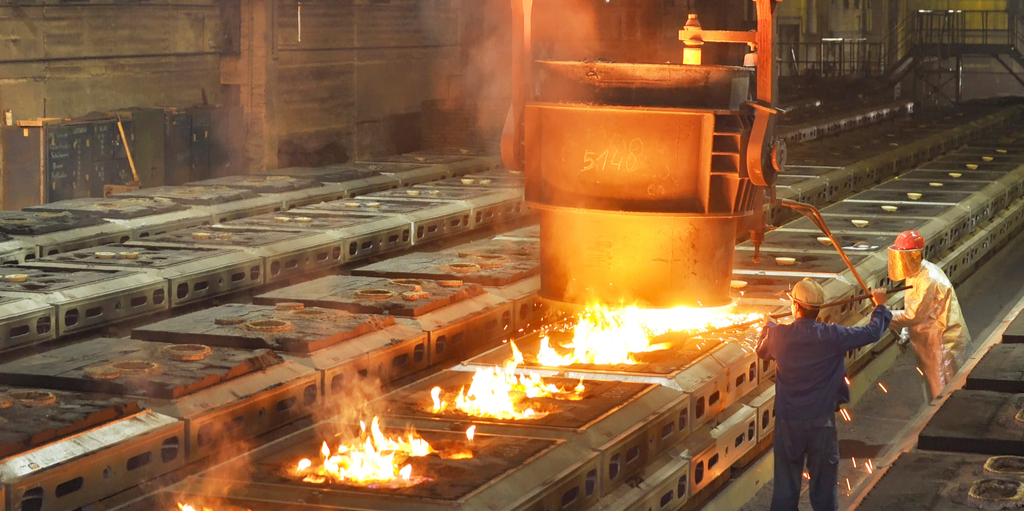The True Costs of an Industrial Policy
Editor’s Note: Richard Reinsch delivered the following prepared remarks in a debate with Oren Cass on the resolution that “America should adopt an industrial policy” at the National Conservatism Conference that convened in Washington D.C., July 14-16, 2019.
Who we are as a country profoundly shapes how we engage in commerce. Our constitutional order is broadly built on ensuring that we are both republican and commercial. The freedom to be a self-governing people also comes with the duty of protecting the public sphere from faction and organized interests profiting at the expense of the public. Publius notes that our “unequalled spirit of enterprise” would lead to international trade, but that it would also require the federal union and a navy to protect that enterprise. And that entails the crucial exception to trading policy of national security, which precedes opulence and can demand trade restrictions.
Because work and its fruits are not a privilege granted by the state, we instinctively recoil at collusion, cronyism, special deals, and the abuse of public power for private gain. Can an industrial policy escape such cronyism or does it not build on the already deep corruption we currently have? If trade policy, like virtually any economic policy, changes focus from adhering to a general rule of serving the consumer to enforcing a multitude of rules that prop up producers, then the focus inevitably shifts to empowering concentrated economic interests against the dispersed and aggregate interests of consumers on whom the costs of such a policy will fall. We give further proof to Adam Smith’s remark that “there is a great deal of ruin in a nation.”
Trade 101
Economic nationalists argue that their policies can restore manufacturing jobs; restoring manufacturing jobs will be desirable in itself; and the problems we face (e.g., opioid crisis, men without work) will persist without this return of manufacturing jobs. But all three claims are false. (1) A nationalist policy will just make us poorer; (2) there are great jobs, and many more jobs, now than there were during the high point of manufacturing employment; and (3) the slogans of returning manufacturing jobs actually obscure the real problems some Americans face. It will also prove a further boost to the growth of government. This would be in keeping, though, with the late Stan Evans’ assessment that conservatives always come to Washington to drain the swamp but soon decide that it’s actually a nice hot tub.
Is it the job of consumers to keep certain workers employed? Of course not. We are all consumers, but we are not all manufacturing workers. Serving the consumer as the captain of the economy is the price of entry to the dynamism of a market economy. And while that price can be steep if you fail to meet it, it’s the best jobs program on offer. After all, the choices of consumers actually determine for us what is in our comparative advantage and what is not. This is how millions of new jobs are created, jobs in industries that previously did not even exist. This is a crucial feature of how trade increases the wealth of a country.
Why are we so hung up about manufacturing jobs which are currently only eight per cent of employment? According to the Bureau of Labor Statistics, in May 2019 the average hourly wage for production and non-supervisory workers in manufacturing is $22.03; for production and non-supervisory workers in the private-sector service industry, the hourly wage is $23.11. Construction workers have a higher wage than manufacturing workers as do those in mining and extraction industries.
In fact, the decline of manufacturing work goes back to the 1950s and it has declined by a regular pace (four-tenths of one per cent, annually) since 1961, regardless of other factors in the business cycle. And the American experience of declining manufacturing employment exists in virtually every Western country.
According to data from the St. Louis Federal Reserve the manufacturing share of nominal gross domestic product has declined from twenty eight per cent in 1953 to twelve per cent in 2015, but manufacturing’s share of real gross domestic product has been fairly constant since the 1940’s (between eleven to thirteen per cent), in 2015 it was 11.7 per cent. In real terms growth in manufacturing has kept up with the growth in the economy over the past seventy years. Rather, manufacturing’s roughly constant share of real GDP and total declining employment share indicate an increase in productivity of the manufacturing sector relative to the overall economy. This is likely because of automation. In 1980 it took 10 man-hours to make one ton of steel; by 2015 that number was two man-hours. Economists Michael Hicks and Srikant Devaraj calculate that between 2000-2010, ten per cent of job losses in the US were trade-related. The other ninety per cent were lost to technological change.
Why will our nation become poorer? Even if, say, manufacturing wages are, on average, higher than service-sector wages, it does not follow that using tariffs or other interventions to create more manufacturing jobs in the U.S. will create jobs that pay as high as the current manufacturing average. Why there aren’t more manufacturing jobs is likely because any further manufacturing activity in the U.S. that uses human labor would be a less-efficient use here of whatever resources and labor are diverted into that manufacturing activity. Further, existing manufacturing jobs in the U.S. pay wages as high as they do because these jobs are worth using relatively high-skilled American workers to perform (while manufacturing jobs performed in other countries are jobs worth using for their performance the workers in those other countries). Using tariffs and other interventions to artificially bring manufacturing jobs from (say) China or Mexico to the U.S. would be to use tariffs and other interventions to bring to the U.S. jobs that (1) aren’t as efficiently performed here as they are performed in other countries, and (2) aren’t as efficiently performed here as are those manufacturing jobs that are here ‘naturally’ – that is, without the assistance of tariffs and other interventions.
Trump’s Tariffs
What have been the results of the Trump tariffs? Is it actually easier now to impose tariffs than it was in the 1980s, the 1930s, the 1820s? No, it’s actually much worse. Why? Over one half of all imports serve as inputs in domestic production processes. Fifty five per cent of the final cost of imported Chinese goods is American content. The steel tariffs do well for the 140,000 Americans in this industry, but what about the two million Americans who work directly with steel as an input? You’ve raised their prices, and thus they must pass it on to their consumers eventually. Translation: We’re poorer as a result.
Working-class Americans are among the greatest beneficiaries of free trade given the large proportion of their income that they spend on clothing, food, transportation, and other basic goods whose price is made cheaper by the free flow of goods and services. For example: the dreaded Chinese imports, a 2018 paper found that between 2000-07, trade generated $202 billion in consumer benefits via lower prices equal to $101,000 per manufacturing job lost.
Losing Jobs
But what about “China Shock” which refers to a 2013 paper by the economists David Autor, David Dorn, and Gordon Hanson, demonstrating that imports from China resulted in a twenty one per cent decline in manufacturing employment from 1999-2011, a loss of 2.4 net million jobs or 15,385 jobs per month? The jobs lost were primarily in labor-intensive, low-skill manufacturing (apparel & furniture).
I do not dismiss the difficulty of losing a job. However, I think that we risk an “economistic” or materialistic explanation if we attribute male unemployment, “deaths of despair,” lower marriage rates, divorce, opioid use, solely to free trade and Chinese imports. Most of the items I mention precede by decades the admission of China to the WTO. Decreasing male workforce participation begins long before 2001 and it coincides with the retreat from marriage and the rise of President Johnson’s Great Society programs. Family breakdown starts its dismal turn around 1960. “Deaths of despair” rise after 1998, but by that point the 20th percentile of male pay had been rising for five years. Moreover, deaths of despair continue their growth in 2019, and affect much broader groups of Americans than white males without a college degree. Yet the economy continues to grow and pay for our low-wage earners continues to rise, as many note. Male pay at the 20th percentile is nineteen per cent higher today than 1993. Perhaps we should look to prescription drug practices and the lethality of heroin and fentanyl, two drugs with greatly increased usage rates.
We should, though, put “China Shock” job losses in perspective. Six million net jobs were created during this period. And amidst the decline that has, apparently, struck our economy because of free trade, consider the following: US manufacturing output is forty five per cent higher now than it was when NAFTA took effect and has almost returned to its peak in 2007 before the great recession. Manufacturers in America produce eleven per cent more output than they produced when China joined the WTO eighteen years ago. US industrial capacity is sixty six per cent greater now than when NAFTA was launched, it’s fifteen per cent higher than when China joined the WTO. Consider the Industrial Production Index which tracks the output of manufacturing, mining, electric, and gas utilities. Today this output is at a record high. US exports today are two hundred per cent higher than they were when NAFTA commenced. And they are eighty five per cent higher than when China joined the WTO, and nearly 800 per cent higher than in 1975. As George Will has asked, “From what do we need protecting”? What about trade deficits? We’ve run deficits for over forty years but during this same period the net new jobs created is 70,000,000. There’s no connection between trade deficits and the inability to create new jobs. Those facts alone should give pause to anyone who thinks our trade policies have diminished our economy.



